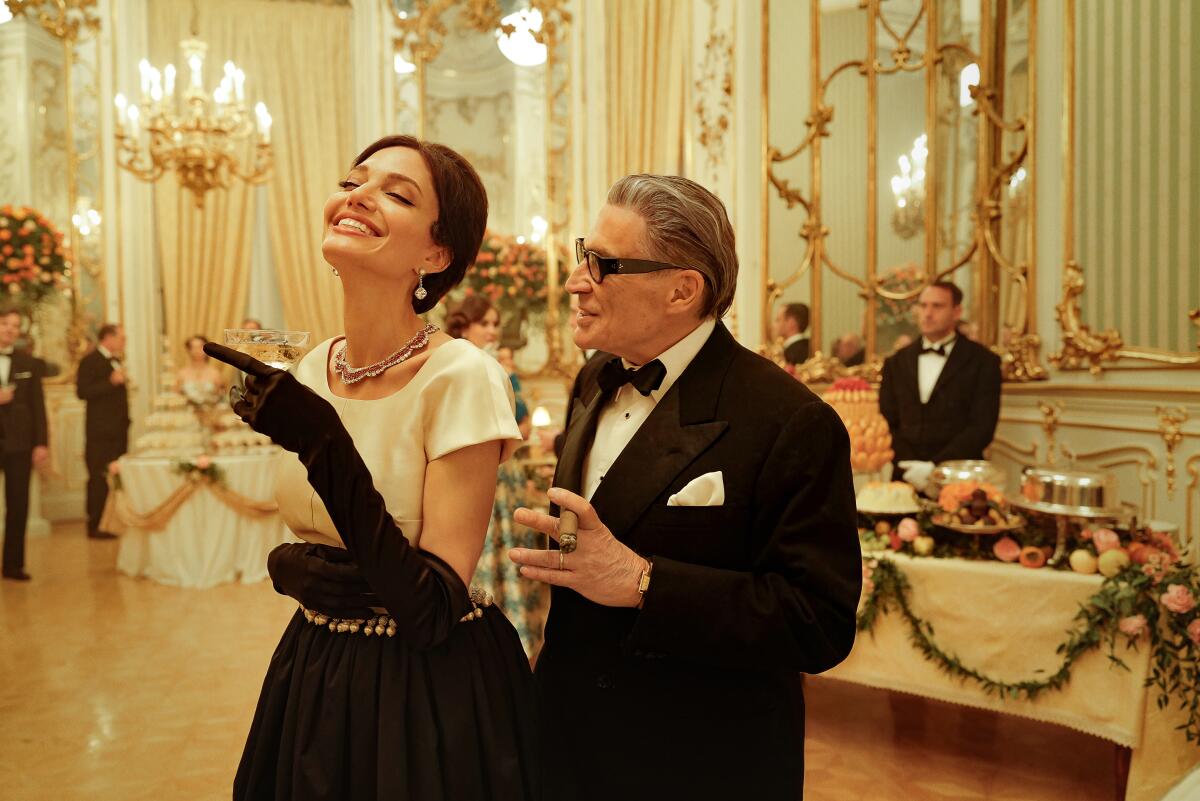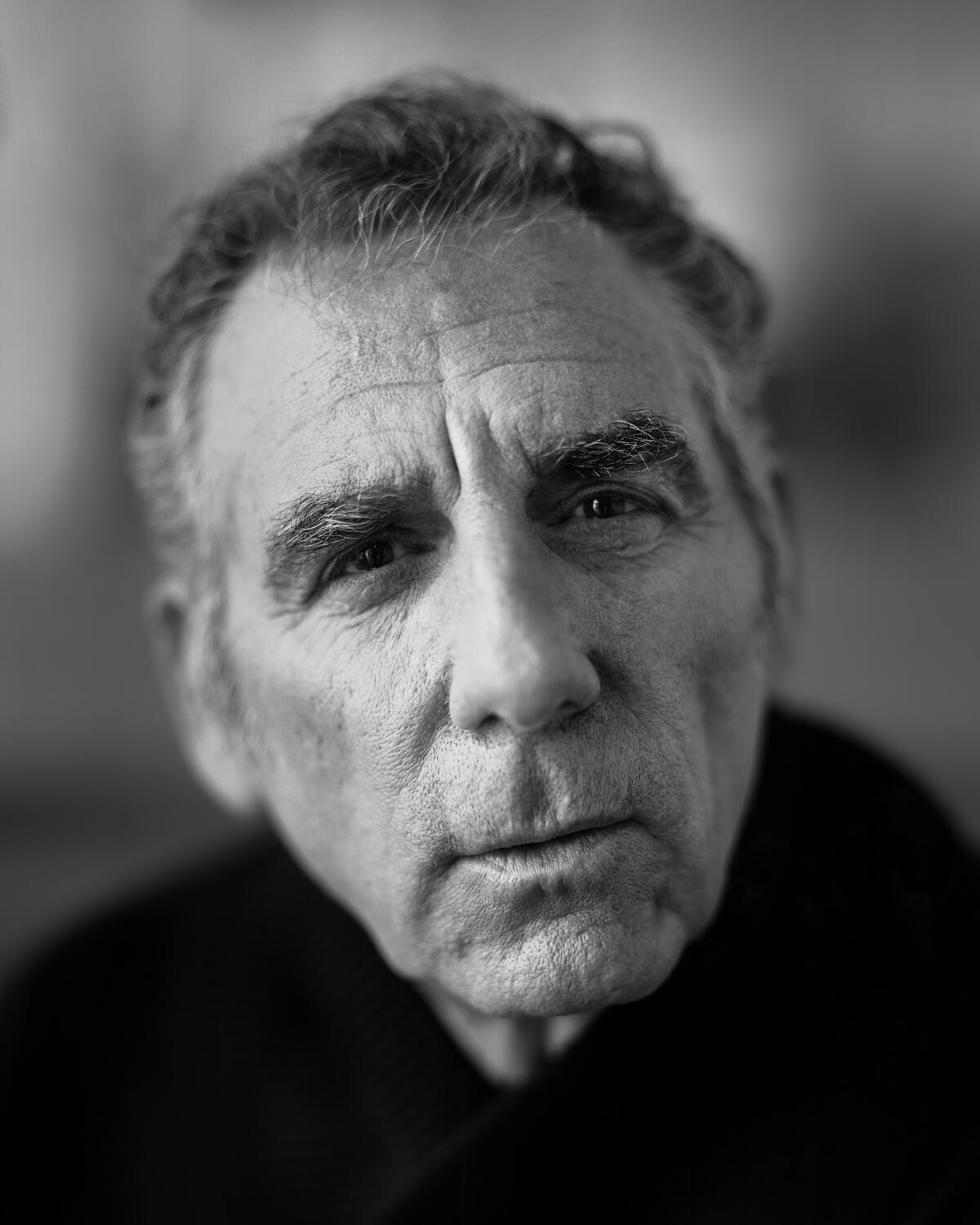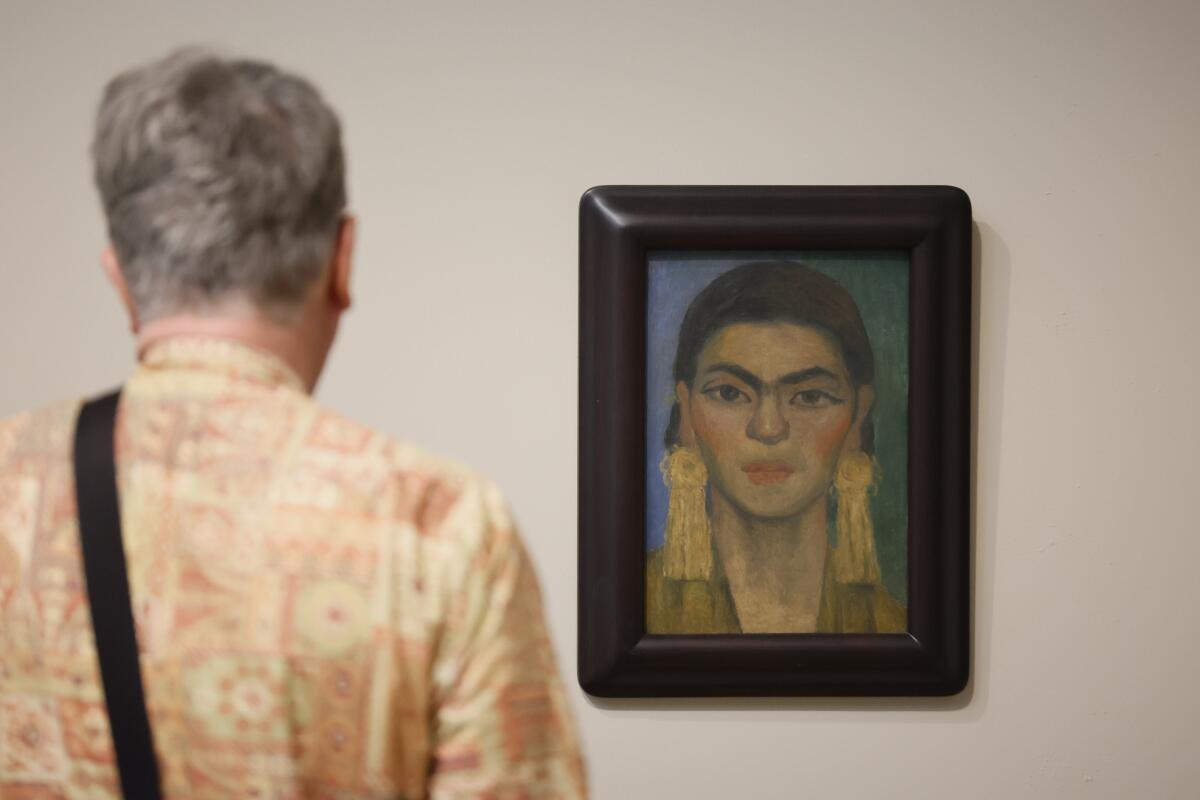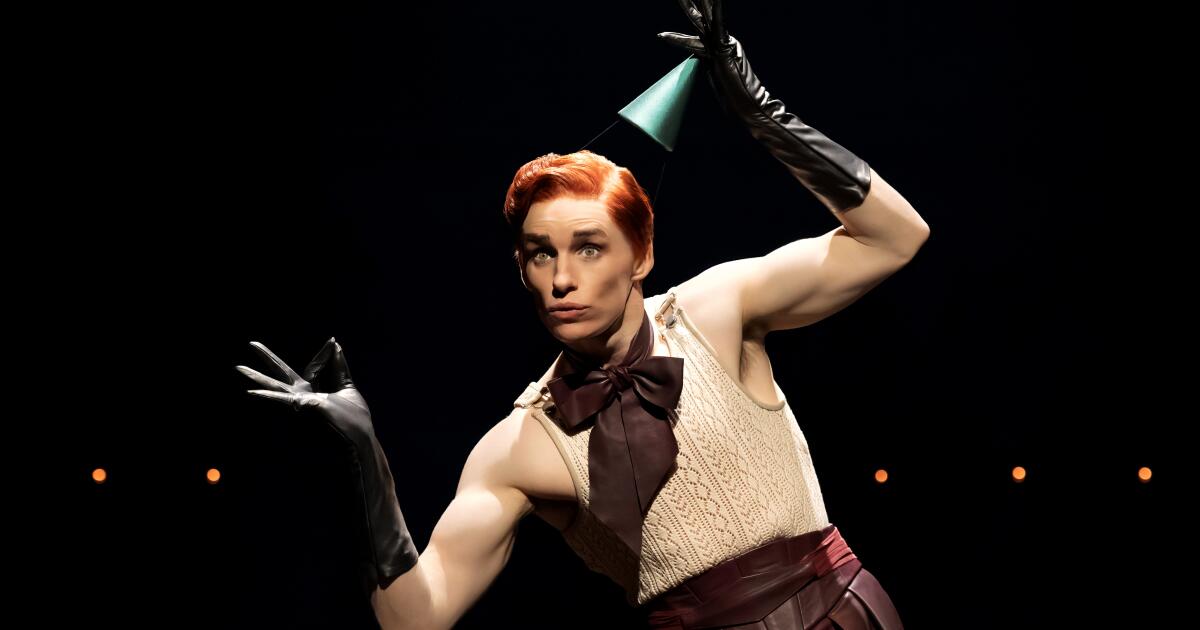This photo of Eddie Redmayne in Cabaret: Can you ever unsee it?
(Marc Brenner)
Congratulations, you made it. Various apocalyptic moments of 2024 cast doubt on whether we would, to borrow the Hollywood worker mantra, “survive till ’25.” But here we are, closing out a year in which one of the grandest art spectacles ended with burning rock raining down on the audience. Let’s forget all of that, shall we? This edition of Essential Arts is focusing on you, our readers. What were your favorite arts stories of 2024?
Editors often dread these year-end roundups. Look at reader data, and all the work on hard-hitting investigations, carefully considered criticism or stress-inducing breaking news can lose out to the news of a reality TV star bitten by a camel. But I’m happy to report that this year’s list of reader hits is full of good work. I’m Craig Nakano, assistant managing editor for entertainment and arts, here to present your favorites in art, architecture, theater, classical music, books and other corners of culture.
Most-read stories of 2024
Newsletter
You’re reading Essential Arts
Our critics and reporters guide you through events and happenings of L.A.
You may occasionally receive promotional content from the Los Angeles Times.
The most popular arts articles (artsicles!) of 2024 — based solely on the total number of times each one was opened on latimes.com — are an eclectic group.
Classical music critic Mark Swed’s assessment of the Netflix movie “Maria” and how well it captures (or doesn’t) the essence of opera singer Maria Callas was more than an arts team hit for the year. It’s one of the most-read articles on all of latimes.com this month.

Angelina Jolie as Maria Callas and Haluk Bilginer as Aristotle Onassis in “Maria.”
(Pablo Larraín / Netflix)
Art critic Christopher Knight’s take on the missed opportunities of Ken Burns’ latest documentary, “Leonardo da Vinci,” was equally popular. (Hint: If you’re choosing between Maria or Leo, go with the latter.)
I recall being surprised reading theater critic Charles McNulty’s less-than-enthusiastic reaction to Eddie Redmayne’s turn as the Emcee in “Cabaret” on Broadway. Apparently you were too, with enough readers clicking into the story to make it one of our most-read reviews of the year. (I still chuckle at the description of Redmayne’s performance as Howdy Doody shooting a spread for Vogue Hommes.)
We’ve been rebuilding our coverage of local arts news, partly through this newsletter and also through standalone stories such as Jessica Gelt’s on-the-scene reporting outside the Hammer Museum, where UCLA faculty protested the treatment of pro-Palestinian student demonstrators on campus,.
Ashley Lee’s scoop that the cost of the three-year MFA program at USC’s School of Dramatic Arts — tuition that was $58,234 last year — would drop to zero starting with the 2024-25 academic year registered with readers for obvious reasons. Also charting: Lee’s breakdown of a key scene in the movie adaptation of “Wicked” and how a Broadway musical number has been supersized for Ariana Grande on the big screen.
Describing the memoir “Entrances and Exits,” another entry in our top 10, Times contributor Chris Vognar wrote: “It’s the story of a very lonely kid, raised by a working mother, a schizophrenic grandmother and the streets of Southern California; an Army veteran who found his life’s purpose on the stage, poured everything into his craft, rose to the height of his profession, never learned to control his rage, flamed out in horrific fashion — and set about slowly rebuilding himself.”

(Marcus Ubungen / For The Times)
The man in question is Michael Richards, and the disgraced “Seinfeld” actor‘s racist tirade against a heckler at his stand-up show in 2006 remains indefensible, as the comedian acknowledged. Vognar’s interview with the actor unfolds as a deeply felt conversation about a quest for forgiveness that isn’t always forthcoming.
Our interview with Moon Unit Zappa also was full of conflicted emotions that connected with our readers. Marc Weingarten’s August article about the original Valley Girl’s new memoir, “Earth to Moon,” has moments of humor, pain, wonder, confusion and loneliness — a colorful account of life growing up in a singularly L.A. household, one that Zappa amusingly summed up as “too much nakedness and noise!”
What our subscribers were reading
Our reader metrics measure engagement with articles beyond click counts. How long did people spend reading this article? How many people subscribed to The Times to read it? How many already were subscribers? How much of the audience was local?
Consider these criteria and a different set of stories emerges as the most valuable journalism among our core audience. One of the biggest reader spikes in the first half of the year was McNulty’s conversation with leaders of Center Theatre Group about the reopening of the Mark Taper Forum, arguably the city’s most important stage for drama, which had closed in the financial wreckage of the pandemic. The frank conversation with CTG Managing Director and Chief Executive Meghan Pressman and Artistic Director Snehal Desai raised so many important questions: Can the Taper once again truly be a community forum? Can theater be central to the culture of this city? Can CTG — and, by extension, regional theater nationwide — survive?
Similar concerns propelled a Swed column that turned Esa-Pekka Salonen’s departure as music director of the San Francisco Symphony into a wake-up call for cash-strapped arts institutions everywhere. Swed, our resident optimist, reminded us that the formula for artistic success is straightforward, if not simple: Artists create big ideas, boards work to fund them, audiences reward the risk. Repeat.
Another big talker was Gelt’s look into Sci-Fi World, the museum-ish operation that was slated to open in the former Sears building in Santa Monica despite the child-pornography conviction of one of its organizers and questions about who was running the place and what exactly was on view to see. (Oh man, remember the world’s saddest red carpet?)
Southern California readers also flocked to Knight’s guides to the permanent collections of the Getty and Norton Simon museums. (Side note: If you’ve got out-of-town visitors this holiday season, get thee to Mariana in Pasadena.) Our art critic’s biggest subscriber exclusive, however, was his revelation about a Diego Rivera portrait of Frida Kahlo at LACMA — the only known Rivera easel painting of Kahlo in the world. Read the article and you’ll see the painting in an entirely different light.

(Allen J. Schaben/Los Angeles Times)
Three other pieces that resonated deeply with our core readers: design contributor Sam Lubell’s review of Intuit Dome as well as his list of the eight best L.A.architectural projects of 2024, and contributor David A. Keeps’ conversations with designers and craft artists sidelined by the dearth of TV and film jobs in L.A. and needing to pivot their careers. (Entertainment reporter Kaitlyn Huamani’s May article about struggling below-the-line workers and Josh Rottenberg’s June piece about a Hollywood exodus of crew members leaving L.A. for a more affordable life elsewhere also registered as some of the biggest reads of a difficult year.)
The dearly departed
We lost great artists and arts leaders in 2024. Poet Nikki Giovanni. Broadway star Gavin Creel. South Coast Repertory founding artistic director Martin Benson. Performer and activist Sir Lady Java. Dancer and choreographer Judith Jamison. Artists Frank Stella, Bill Viola and Richard Serra. Gemini G.E.L. co-founder Sidney Felsen. And so, so many more.

Dancer Michaela DePrince rehearsing in 2012.
(Denis Farrell / Associated Press)
Occasionally, it’s the death of a less famous name that prompts the public to learn about an extraordinary life they otherwise would not have known. Such was the case of Michaela Mabinty DePrince, a ballet dancer with Dance Theater of Harlem, Dutch National Ballet and Boston Ballet, whose tragic death at 29 was mourned by Misty Copeland and Debbie Allen, among others. As writer Alexandra Del Rosario wrote in The Times’ obituary, DePrince was born in Sierra Leone during a civil war in which her parents were killed. Adopted and raised in the U.S., DePrince went on to a successful ballet career, followed by projects as varied as dancing in Beyoncé’s “Lemonade” visual album and raising awareness of children affected by war. Her obituary was the second-most-read on latimes.com for 2024, behind only Fernando Valenzuela’s.
And now for something completely different …
Now that I’ve sufficiently brought down the room (it was inevitable, given the year we’ve had), let me offer a bit of levity in the form of “McAtlas.” Gary He, a James Beard Award-winning journalist, sent me his new book, which he describes as a “visual social anthropology of the largest restaurant chain in the world.”
Published last month, “McAtlas” documents what McDonald’s restaurant architecture and McDonald’s food looks like in other countries. He’s captured the kiwi burger (with beet slices and fried egg) in New Zealand, the Croque McDo (with Emmental cheese and ham) in France, edamame and corn Happy Meals in Japan, the bulgogi burger in South Korea and pineapple pie à la mode in Thailand.
Enjoying this newsletter? Consider subscribing to the Los Angeles Times
Your support helps us deliver the news that matters most. Become a subscriber.
Whether you think of the chain as comfort food or culinary abomination, nostalgic kitsch or Exhibit A in American corporate cultural appropriation, “McAtlas” is intriguing — especially at this moment in history, when globalization feels like a pendulum about to swing hard in the opposite direction.
Even haters of the Golden Arches might find charms in He’s project, whose page edges are colored so that the book, when closed, looks like an abstraction of a Big Mac: two all-beef patties, special sauce, lettuce, cheese, pickles and onions on a sesame seed bun.
And last but not least
I couldn’t end this year-end wrapup without mentioning one more story that clearly resonated with subscribers: the farewell column by your former Essential Arts host, Carolina A. Miranda, who left The Times to pursue some passion projects. Carolina, we miss you!
To all our readers who stuck with us for the wild ride that was 2024, thank you. May the new year bring peace and joy amid the inevitable turbulence. We’re buckled up and hope you’ll join us for the roller coaster that will be 2025.

